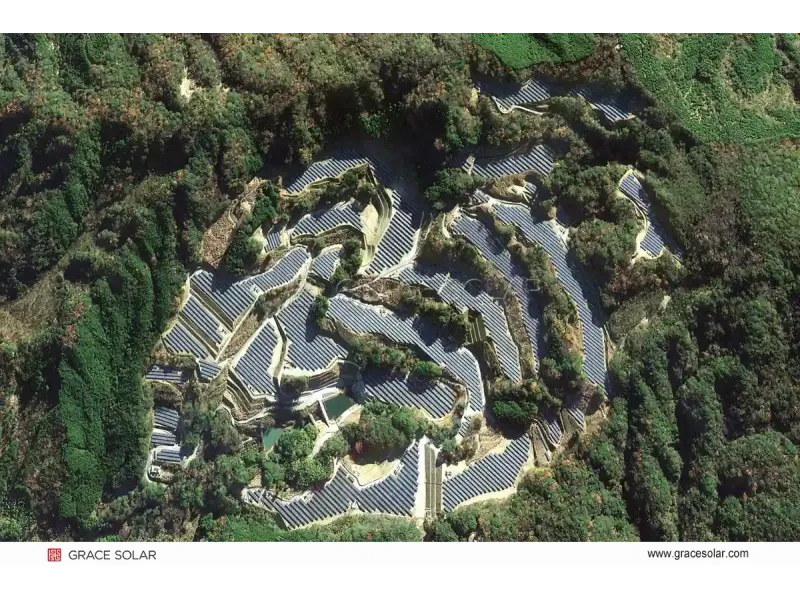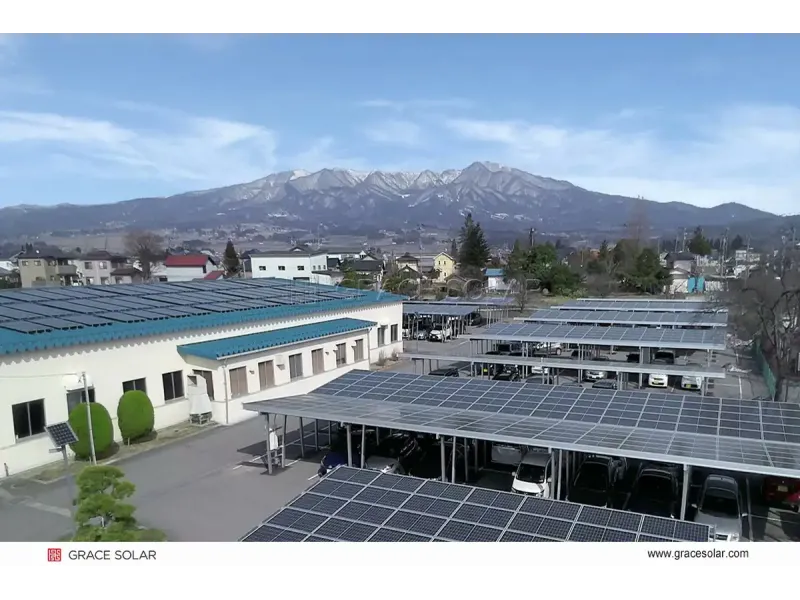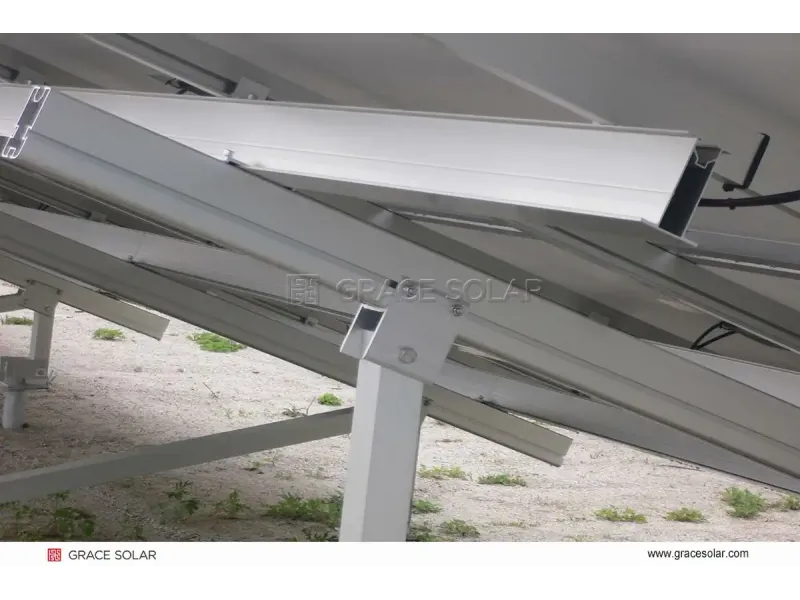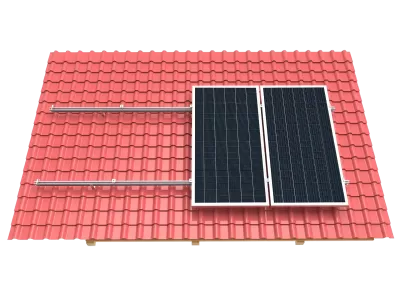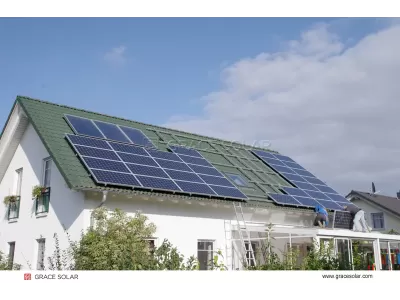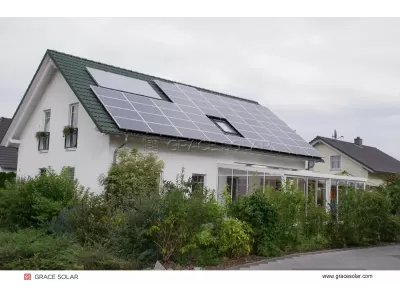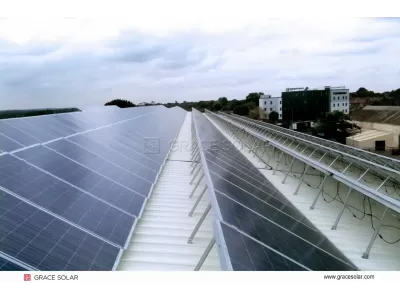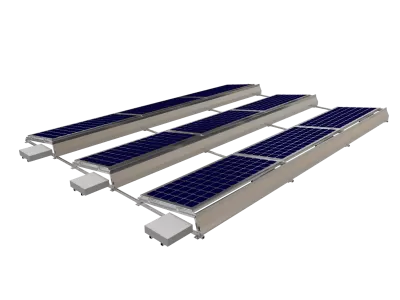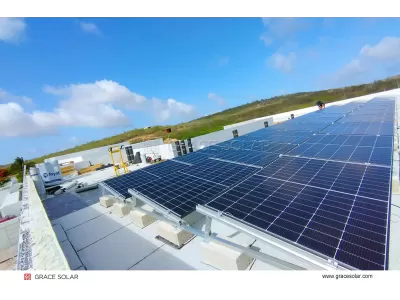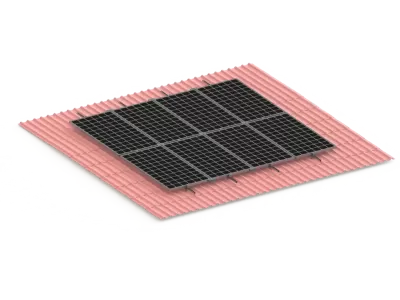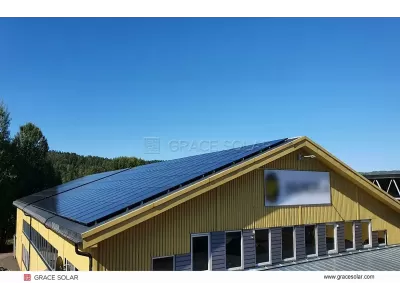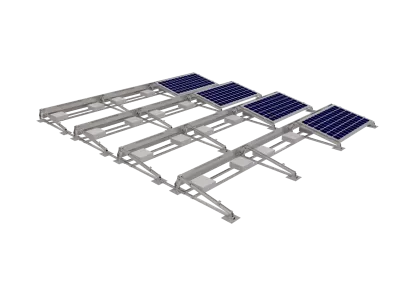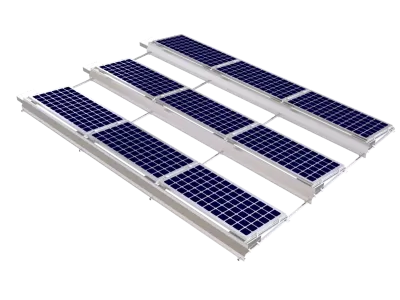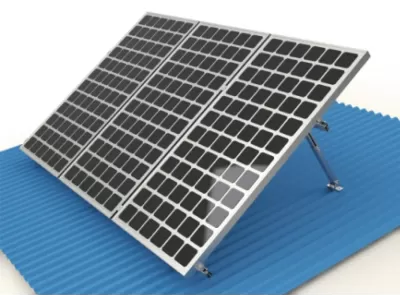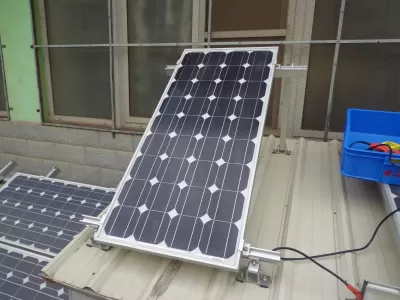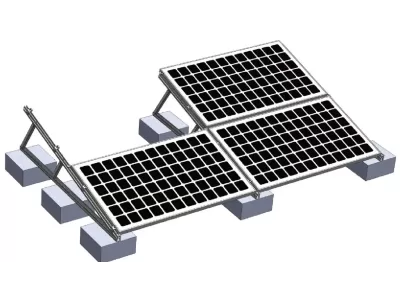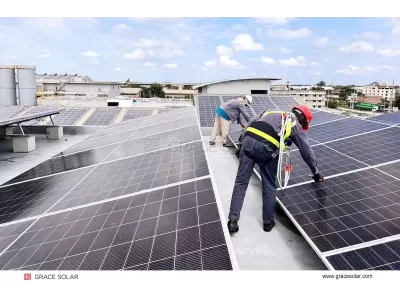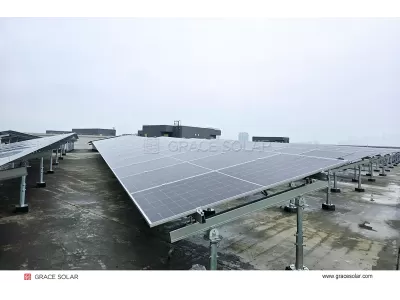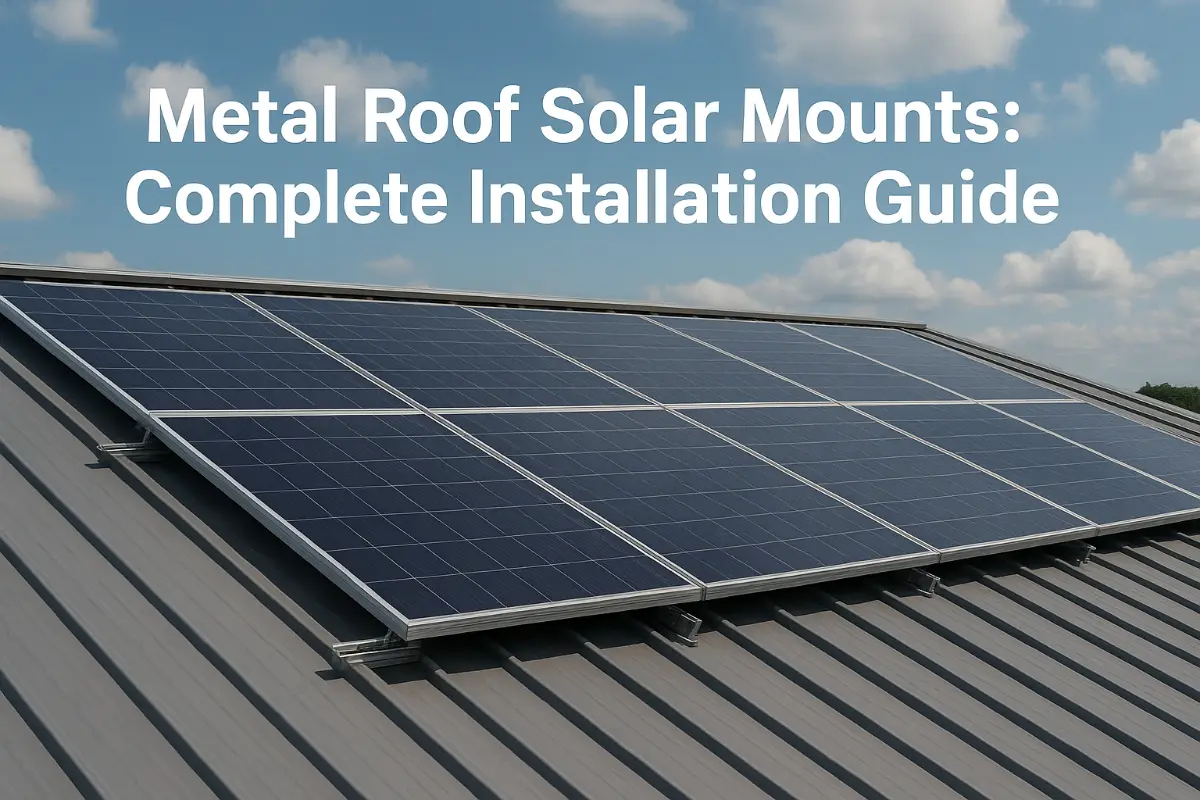
What Are the Best Solar Panel Mounts for Metal Roofs? Complete Guide
Published on November 19, 2025 | Solar Solutions
Table of Contents
Understanding Metal Roof Solar Mounts
Metal roofs present unique opportunities and challenges for solar panel installation. Unlike traditional asphalt shingle roofs, metal roofs offer exceptional durability and longevity, making them ideal companions for solar energy systems that typically last 25+ years. However, the mounting approach must be specifically designed to preserve roof integrity while ensuring maximum system performance.
The key advantage of metal roofs is their ability to accommodate non-penetrating mounting systems that don't require drilling holes through the roofing material. This eliminates potential leak points and maintains the roof's warranty. As industry leaders in solar mounting solutions, Grace Solar has developed specialized mounting systems that leverage these benefits while providing secure, long-lasting installations.
Metal roofs are becoming increasingly popular in both residential and commercial construction, with growth rates exceeding 15% annually in many markets. This surge in popularity makes understanding proper solar mounting techniques more important than ever. The compatibility between metal roofs and solar installations is natural - both systems are designed for decades of reliable performance, making them perfect partners in sustainable energy generation.
Types of Metal Roof Mounting Systems
1. Standing Seam Clamp Systems
Standing seam metal roofs are ideal for solar installations due to their raised seams that provide perfect attachment points. S-5! clamps and similar systems attach directly to these seams without penetration, using set screws that compress against the seam material. These systems offer:
- No roof penetration - maintains waterproof integrity
- Exceptional wind resistance (up to 60 m/s)
- Easy installation and removal for roof maintenance
- Compatibility with various standing seam profiles
- Preservation of roof manufacturer warranties
- Minimal impact on roof thermal performance
2. Exposed-Fastener Roof Brackets
For corrugated, trapezoidal, or R-panel metal roofs, specialized brackets like VersaBracket or CorruBracket provide secure mounting points. These systems:
- Attach to the raised ribs of the metal panels
- Include integrated waterproofing seals
- Offer versatile mounting face configurations
- Work with both rail-based and rail-less systems
- Accommodate various panel thicknesses and profiles
- Provide excellent load distribution across roof structure
3. Rail-Less Direct Mount Systems
Advanced systems like the S-5-PVKIT eliminate traditional rails, attaching panels directly to roof attachments. Benefits include:
- Reduced weight (approximately 85% lighter than rail systems)
- Lower material and shipping costs
- Faster installation times
- Clean, streamlined appearance
- Reduced potential for thermal bridging
- Improved airflow beneath panels for better cooling
4. Hybrid Mounting Solutions
Modern mounting systems often combine elements from different approaches to optimize performance. These hybrid solutions provide:
- Customizable configurations for specific project needs
- Adaptability to complex roof geometries
- Integration with building management systems
- Compatibility with emerging solar technologies
Choosing the Right Mount for Your Metal Roof
Selecting the appropriate mounting system depends on several critical factors that impact both short-term installation success and long-term system performance.
Roof Profile Compatibility
Different metal roofs require specific mounting solutions. Standing seam roofs work best with clamp systems, while corrugated and trapezoidal panels need specialized brackets. Always verify compatibility with your specific roof profile before selection. Consider factors such as seam height, panel thickness, and rib spacing when evaluating mounting options. Professional assessment by experienced installers like those trained by Grace Solar can prevent costly compatibility issues.
Structural Requirements
Consider your local climate conditions, including:
- Wind loads: Ensure systems are rated for your region's wind speeds
- Snow loads: Verify capacity for expected snow accumulation
- Seismic considerations: Important in earthquake-prone areas
- Thermal expansion: Account for temperature variations that affect metal roofs
- Corrosion resistance: Essential in coastal or industrial environments
Material Quality and Certifications
Look for systems with:
- Aluminum alloys (6005-T5 or 6061-T6) for corrosion resistance
- Stainless steel components (304 or 316 grade)
- UL 2703 listing for mounting systems
- Compliance with international standards (AS/NZS 1170, DIN 1055)
- Independent laboratory testing certifications
- Proven track record in similar environmental conditions
Grace Solar Metal Roof Solutions
With over a decade of experience and a global presence in more than 100 countries, Grace Solar has established itself as a leader in solar mounting solutions. Our expertise in metal roof installations is backed by extensive research, testing, and real-world application across diverse climate conditions and architectural styles.
Why Choose Grace Solar for Metal Roof Mounting?
- Proven Track Record: 48GW global cumulative installed capacity with thousands of successful metal roof projects
- Engineering Excellence: Fully equipped 2000m² experiment center with advanced testing capabilities
- Quality Assurance: UL, TUV, CE, JIS, MCS certifications ensuring international compliance
- Comprehensive Solutions: From residential to utility-scale projects with customized approaches
- Innovation Leadership: 100+ patents in solar mounting technology driving industry advancement
- Global Support Network: Technical assistance and training programs worldwide
Our Solar Roof Mounting System portfolio includes specialized solutions for all types of metal roofs, designed with the precision and reliability that has made us the top choice in markets worldwide, including achieving #1 market share in Japan. We understand that every metal roof presents unique challenges, which is why we offer customized solutions tailored to specific project requirements, whether for historic building preservation or cutting-edge architectural designs.
Installation Best Practices
Pre-Installation Assessment
Before installation, conduct thorough roof inspections to:
- Verify roof condition and remaining lifespan - metal roofs should have at least 20 years of service life remaining
- Identify optimal mounting locations considering structural supports and shading patterns
- Check for existing roof warranties and requirements from manufacturers
- Confirm structural capacity for additional loads including dynamic and static forces
- Document existing roof condition with photographs for warranty protection
Proper Mounting Techniques
Follow manufacturer guidelines for:
- Correct clamp placement and torque specifications to prevent overtightening
- Proper sealing of any necessary penetrations with high-quality sealants
- Adequate clearances for thermal expansion and contraction cycles
- Electrical grounding and bonding requirements for safety compliance
- Regular inspection protocols throughout the installation process
Post-Installation Maintenance
Proper maintenance ensures long-term performance:
- Schedule semi-annual inspections of mounting hardware and connections
- Monitor for signs of corrosion, especially in harsh environments
- Check torque values on critical connections annually
- Inspect sealant integrity around any penetrations
- Document maintenance activities for warranty validation
Cost Analysis and ROI
Understanding the financial aspects of metal roof solar mounting is crucial for making informed decisions. While initial costs may be higher than traditional roofing applications, the long-term benefits often justify the investment.
Initial Investment Considerations
The cost of metal roof mounting systems varies based on:
- Roof complexity and accessibility factors
- Selected mounting system type and materials
- Local labor rates and installation expertise
- Project scale and customization requirements
- Regulatory compliance and permitting costs
Long-Term Value Proposition
Metal roof mounting systems offer significant advantages:
- Extended system lifespan matching metal roof durability
- Reduced maintenance costs compared to penetrating systems
- Preserved roof warranties maintaining asset value
- Enhanced energy production through optimal positioning
- Increased property value through integrated renewable energy
Conclusion
Choosing the right solar panel mounts for metal roofs is crucial for system performance, longevity, and roof integrity. The ideal solution depends on your specific roof type, local climate conditions, and performance requirements. Non-penetrating clamp systems offer excellent solutions for standing seam roofs, while specialized brackets work well for corrugated and trapezoidal panels.
As a trusted global leader with extensive experience in solar mounting solutions, Grace Solar provides reliable, engineered solutions for metal roof applications worldwide. Our commitment to quality, innovation, and customer satisfaction ensures that your solar installation will deliver optimal performance for decades to come.
The future of metal roof solar mounting continues to evolve with advancements in materials science, digital design tools, and installation methodologies. Staying informed about these developments and partnering with experienced providers like Grace Solar ensures that your investment continues to deliver value throughout its operational lifespan.
Explore our complete range of solar solutions and discover why thousands of customers trust Grace Solar for their renewable energy projects. Our team of experts is ready to assist with technical guidance, project planning, and implementation support to ensure your metal roof solar installation achieves its full potential.

